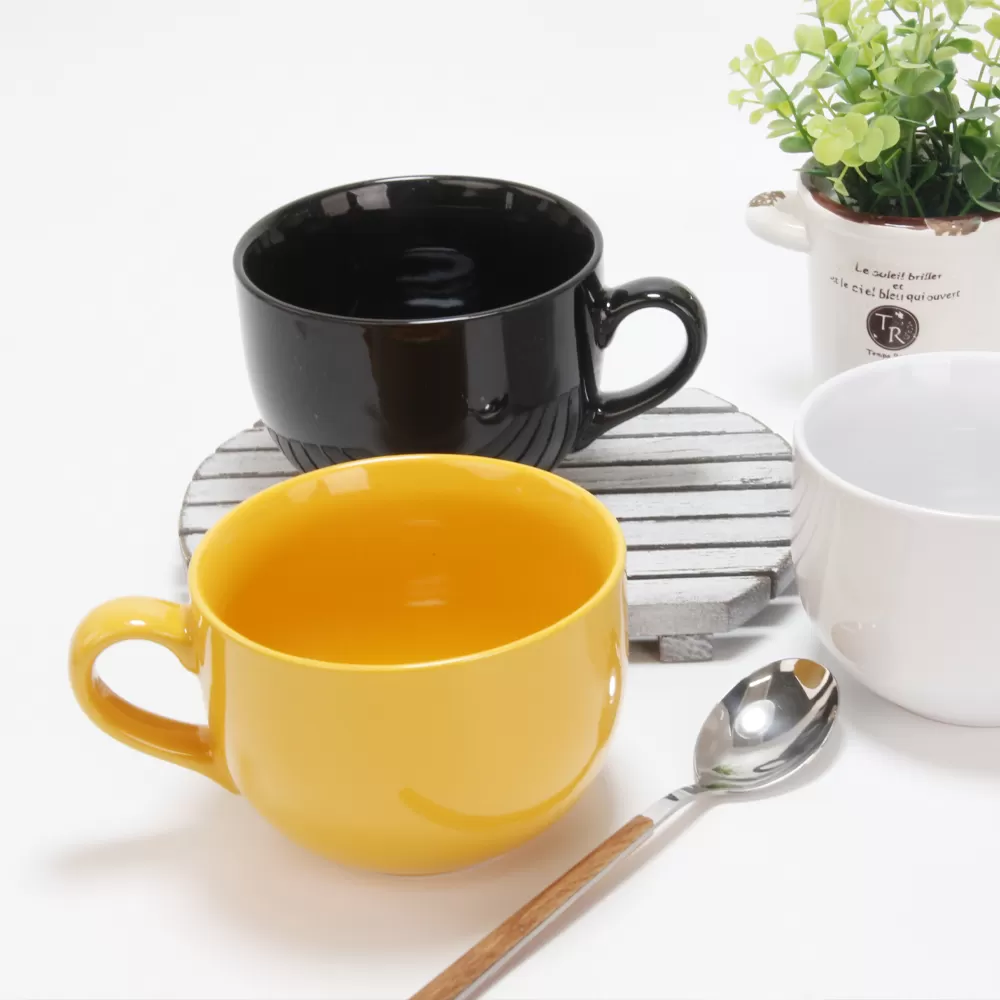4 Types of Ceramic Tableware Every Buyer Should Know
Ceramic tableware has been a trusted companion of dining culture for centuries. Why? Because they combine durability, elegance, and versatility, making them the go-to material for wholesalers, restaurants, hotels, cafés, and retailers.
Knowing the different kinds of ceramic plates and dishes is pretty important. Choosing the right options can really improve the dining experience, boost your brand, and increase your profits. There are 4 main types of ceramic tableware that dominate the market today: Porcelain, Stoneware, Earthenware, and Bone China.
Porcelain Tableware
Key Features of Porcelain
Porcelain is known for its smooth, bright whiteness and fine craftsmanship. Made at extremely high firing temperatures, porcelain is dense, non-porous, and resistant to chipping.
Advantages of Porcelain for Hospitality & Retail
Professional Image: Its clean and elegant look is ideal for restaurants and hotels.
Durability: Withstands repeated use in commercial kitchens.
Versatility: Available in everything from casual dinner plates to luxury tea sets.
Earthenware Tableware
Traditional Appeal of Earthenware
Earthenware is one of the oldest forms of ceramics, recognizable by its warm, natural tones and handmade charm. It's softer and more porous than stoneware and porcelain.
Strengths & Limitations in Trade
Earthenware has several strengths and limitations in trade. Its affordability and attractive appearance make it appealing for mass retail markets, while its traditional and artisanal qualities are ideal for decorative tableware. However, earthenware is less durable than porcelain or stoneware and can chip easily if not handled carefully.
Target Buyers for Earthenware
People who usually buy earthenware are stores that sell handmade or create items, cafés that have a cozy, country feel, and big suppliers looking for affordable dishes to sell.
Stoneware Tableware
What Makes Stoneware Unique
Stoneware is made from a dense clay that is fired at high temperatures, typically around 1200℃. This process produces a partially vitrified, durable, and dense dish with a stone-like appearance and texture. Compared to earthenware, stoneware combines excellent durability with a rustic, earthy aesthetic.
Pros & Cons for Businesses and Consumers
It is stronger than earthenware, offers a wide range of colors and glazes, and is safe for use in microwaves and dishwashers. On the other hand, it is slightly heavier than porcelain and does not have the same refined appearance suitable for luxury dining.
Ideal Applications in Restaurants & Homes
Stoneware is well-suited for a variety of settings in both restaurants and homes. It's especially great for casual spots like cafes and bistros that have a modern rustic look, and for everyday family dinnerware sets.

Bone China Tableware
Defining Qualities of Bone China
Bone China is prized for its lightweight, translucent appearance, and luxurious feel. Made with bone ash, it looks pretty fragile but actually holds up pretty well.
Why Luxury Markets Prefer Bone China
It's a sign of class and good taste when you see this. It's priced to appeal to luxury stores. Even though it looks delicate, it is strong and durable.
Where Bone China Fits Best
Bone china works great for luxury hotels, upscale stores, and online shops aimed at high-end customers.
Comparing the 4 Types of Ceramic Tableware
| Feature | Porcelain | Stoneware | Earthenware | Bone China |
|---|---|---|---|---|
| Durability | High | Medium-High | Low-Medium | High |
| Appearance | Elegant & White | Rustic & Stylish | Natural & Handmade | Luxurious & Translucent |
| Price Range | Mid to High | Affordable-Mid | Low | High |
| Best For | Hotels, Restaurants | Casual Dining, Homes | Artisanal Retail, Cafés | Luxury Markets |
FAQs About Ceramic Tableware
Q1: Is stoneware dishwasher and microwave safe?
Yes, most modern stoneware is designed to be both microwave and dishwasher safe, making it highly practical.
Q2: What makes Bone China more expensive?
Its fine craftsmanship, translucence, and use of bone ash give Bone China a luxury appeal, justifying its premium pricing.
Q3: Is earthenware still popular in modern markets?
Yes, especially in rustic cafés, artisanal shops, and among consumers seeking traditional, handmade aesthetics.
Q4: Does stoneware absorb water?
Glazed stoneware is non-porous, so it doesn't absorb water and is easy to clean.
Q5: Why do cafés and restaurants prefer stoneware?
Because stoneware combines rustic charm with practicality. It creates a warm dining presentation while being sturdy enough to withstand heavy, repeated use in busy kitchens.
Ceramic tableware is a reflection of culture and style. From Porcelain's elegance to Stoneware's rustic charm, Earthenware's artisanal value, and Bone China's luxury appeal, every type serves a unique market segment. By understanding these 4 types of ceramic tableware, you can make smarter purchasing decisions.

 EN
EN ES
ES AR
AR DE
DE RU
RU FR
FR Back To News
Back To News